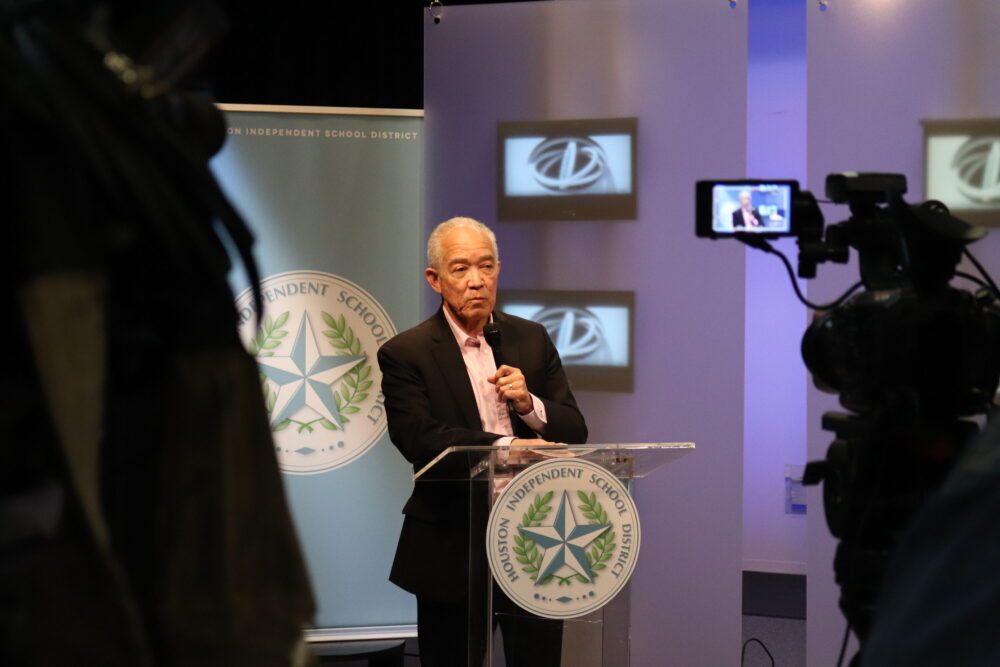Parents are being squeezed by the cost of sending children to school, whether their children are attending public or private, according to two new studies.
Key points:
- One in four parents say they’re struggling to pay bills because of rising education costs
- Families are also struggling to afford costs at public schools, such as uniforms and shoes
- Sending a child to public school in a capital city from prep to year 12 is now estimated to cost more than $92,000
Putting a child through public school from prep to year 12 in a major city is now estimated to set families back more than $92,000, according to new data from Futurity Investment Group.
These estimates blow out to more than $195,000 for Catholic schools and more than $315,000 for independent schools.
Meanwhile, a separate survey by the Smith Family has revealed disadvantaged parents are particularly stressed when it comes to affording the things their children need for education.
The charity surveyed more than 2,200 families who used its services and found almost half worried their children would miss out on uniforms and shoes for school this year.
One in three said their kids would miss out on excursions, about half said they couldn’t afford digital devices and one in six said their children would go without internet access.
The most expensive places to go to public and private schools
Futurity, a company that sells educational investment products, engaged market research firm McCrindle to survey about 1,500 parents across Australia and used their responses to estimate the costs of schooling a child over the next 13 years.
Those estimated costs include school fees, as well as other expenses including extracurricular activities, tutoring, musical instruments, electronic devices, school camps and transport.
It found Sydney and Melbourne were the most expensive places to send your child to school — whether you opt for a private or public education.
The average 13-year cost of a public school education in Melbourne is $108,879 — far above the national capital city average of $92,710.
Parents in Sydney are expected to fork out close to $357,931 to send a child to private school from prep to year 12, the survey data shows.
Canberra is the least expensive capital city for public schools, while Perth parents are projected to spend less on independent schools.
The sacrifices parents are making to pay for school
Smith Family CEO Doug Taylor said inflation had made things worse for already struggling families in the public school system, where 80 per cent of disadvantaged students were taught.
“The last time we did this survey [in 2023] “30 per cent of the families that we surveyed told us they wouldn’t be able to afford those educational essentials of a new school uniform and new school shoes — that’s now at 50 per cent,” he said.
“So certainly with the two years of cost of living pressures, we are seeing great challenges.”
Futurity Group’s data also shows parents are making sacrifices to pay for their children’s schooling.
One in four were struggling to pay bills and 21 per cent were working “more than they wanted to” in order to pay for the fees, the survey data showed.
But the Futurity Group’s data also shows that for some parents, the pressure of paying for schooling has eased.
In last year’s survey about one in four parents — 26 per cent — said they “did not experience any challenges” paying for their child’s education.
This year that had climbed to 35 per cent, with more parents telling the survey they had no issue covering their child’s schooling costs.
No matter where you live, school is getting more expensive
Across the country — and across public and private education — schooling costs are going up.
The projected cost of a 13-year public or private school education was more than 5 per cent higher in 2024 than it was in 2023, Futurity Group’s data shows.
It’s not just school fees that have an impact on parents and families.
Other expenses related to schooling — such as uniforms, electronic devices, and sports equipment — are all expected to increase in cost over the next five to 10 years, Futurity CEO Sam Sondhi said.
In addition, parents often face the expectation for students to bring their own expensive tech devices like laptops and tablets, said Sally Larsen, a former school teacher and now senior lecturer at the University of New England.
“When we were at school, we had the textbook — why does it have to now be online if that’s inaccessible to some children?” she said.
Dr Larsen believes schools should be open to re-assessing digital requirements, to allow as many children as possible to get an education.
“[We need] to make sure that we’re not setting up systems that present barriers to kids who might benefit the most from a good education,” she said.
Loading…Loading…
If you’re unable to load the form, click here.


